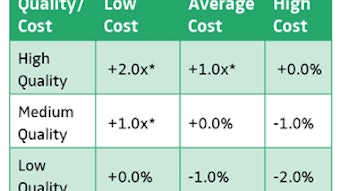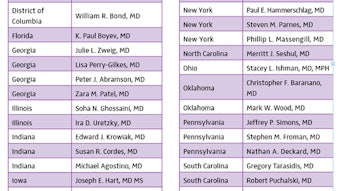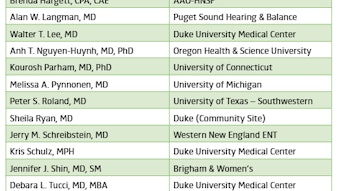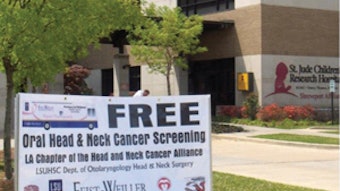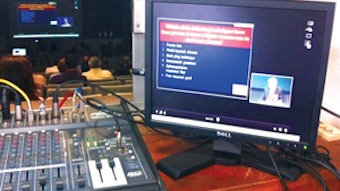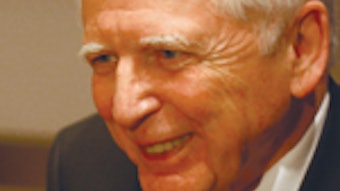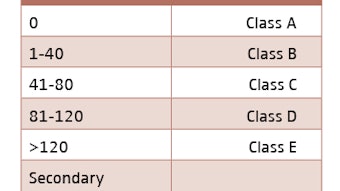CMS Issues Changes to Defining ‘Inpatients’ in the Hospital Setting
CMS recently released the 2014 Inpatient Prospective Payment System final rule, which included a new requirement, commonly referred to as the “2 Midnight Rule.” As members are aware, Medicare has two distinct “Programs” known as Part A (which relates to payment for inpatient services) and Part B (which relates to professional and hospital outpatient services). According to CMS, Medicare beneficiaries having long stays in hospitals as outpatients raised concerns regarding improper payments. Because of such, CMS revised its rule relating to when a patient is deemed “inpatient” versus “outpatient” for payment purposes. Essentially, the rule clarifies that a beneficiary is an inpatient of a hospital if formally admitted via an order by a physician or other qualified practitioner. There are two key principles physicians and qualified practitioners should be aware of regarding the new rule. First, admission must be “certified” by a physician with an order being a required component of that certification. The order must be written, cited in the medical chart, signed by a physician or other qualified practitioner, and must be completed either prior to admission or at the time of admission. Inpatient status only applies prospectively from the time of formal admission, and the order must specifically state admission as an inpatient. A specific format for the certification and order is not required. Additionally, certification must include the reason for the inpatient admission, estimated duration of the patient’s stay, and a tentative post-discharge plan. CMS has highlighted some inpatient admission guidelines, which can be viewed at http://www.cms.gov/Medicare-Fee-for-Service-Payment/AcutelnpatientPPS/Downloads/IP-Certification-and-Order-09-05-13.pdf. If a procedure involves one designated by the Hospital Outpatient Prospective Payment System (OPPS) as an inpatient-only procedure then admission and payment under Part A are deemed appropriate. Further, if a physician expects a patient’s stay to transcend two midnights due to a surgical procedure, diagnostic test, or other treatment, and admits the patient based on that expectation, the admission will generally be deemed appropriate for Part A payment purposes. It is important to note, however, CMS has emphasized that there must be “no reasonable possibility that the care could have been adequately provided in an outpatient setting.” It should also be noted that payment will not be deemed inappropriate in circumstances where the expected 2 Midnight stay is cut short, such as by death, transfer, or unexpected rapid improvement. Second, the new rule distinguishes between the 2 Midnight benchmark and the 2 Midnight presumption. The benchmark serves as guidance for admitting physicians and practitioners and allows Medicare reviewers to identify when an inpatient admission is generally appropriate for coverage and payment. The starting point for determining whether the 2 Midnight benchmark has been met is when the patient begins receiving hospital care on an inpatient basis. In other words, the 2 Midnight clock starts when the beneficiary begins receiving hospital care as an inpatient, assuming admission was reasonable and expected. Conversely, a patient who is receiving care as an outpatient in a hospital operating room and is later formally admitted is not deemed an inpatient during the time spent in the operating room. CMS cites high improper payment rates for inpatient admissions as the reason for the heightened scrutiny. If a physician cannot make a reasonable prediction, it has been suggested that the patient should not be admitted, but rather, should continue receiving care on an outpatient basis. The actual length of care, patients who are in intensive care, and level of care required are not exceptions to the premise that inpatient regulation is based upon a reasonable and supportable expectation of a 2 Midnight stay. The 2 Midnight Presumption is guidance for Medicare review contractors when reviewing claims and determining which to review. The presumption is that claims with lengths of stay greater than 2 midnights after formal admission are presumed appropriate for Part A payment. Such stays will not be the focus of review, unless an unwarranted delay or other evidence exists of an abuse of discretion. In other words, the 2 Midnight presumption serves to flag claims that may need additional scrutiny or review, especially in light of CMS’ argument that 36 percent of improper payments are made for inpatient admissions lasting one-day or less. CMS has stated it will continue to monitor all hospitals for intentional or unwarranted delays, abuses of discretion, or any other unnecessary patterns with inpatient services. The new rules are aimed at reducing long beneficiary stays as outpatients, and clarify if the ordering practitioner expects a beneficiary to stay at least two midnights, they should be admitted as an inpatient. The Health Policy Team will continue to monitor any changes, updates, or alterations to the new rule. To view the complete final rule, visit http://www.entnet.org/Practice/CMS-News.cfm. Members also can email CMS IPPSAdmissions@cms.hhs.gov with any questions regarding admission and/or medical review under the new rule.
CMS recently released the 2014 Inpatient Prospective Payment System final rule, which included a new requirement, commonly referred to as the “2 Midnight Rule.” As members are aware, Medicare has two distinct “Programs” known as Part A (which relates to payment for inpatient services) and Part B (which relates to professional and hospital outpatient services). According to CMS, Medicare beneficiaries having long stays in hospitals as outpatients raised concerns regarding improper payments. Because of such, CMS revised its rule relating to when a patient is deemed “inpatient” versus “outpatient” for payment purposes. Essentially, the rule clarifies that a beneficiary is an inpatient of a hospital if formally admitted via an order by a physician or other qualified practitioner. There are two key principles physicians and qualified practitioners should be aware of regarding the new rule.
First, admission must be “certified” by a physician with an order being a required component of that certification. The order must be written, cited in the medical chart, signed by a physician or other qualified practitioner, and must be completed either prior to admission or at the time of admission. Inpatient status only applies prospectively from the time of formal admission, and the order must specifically state admission as an inpatient. A specific format for the certification and order is not required.
Additionally, certification must include the reason for the inpatient admission, estimated duration of the patient’s stay, and a tentative post-discharge plan. CMS has highlighted some inpatient admission guidelines, which can be viewed at http://www.cms.gov/Medicare-Fee-for-Service-Payment/AcutelnpatientPPS/Downloads/IP-Certification-and-Order-09-05-13.pdf. If a procedure involves one designated by the Hospital Outpatient Prospective Payment System (OPPS) as an inpatient-only procedure then admission and payment under Part A are deemed appropriate. Further, if a physician expects a patient’s stay to transcend two midnights due to a surgical procedure, diagnostic test, or other treatment, and admits the patient based on that expectation, the admission will generally be deemed appropriate for Part A payment purposes. It is important to note, however, CMS has emphasized that there must be “no reasonable possibility that the care could have been adequately provided in an outpatient setting.” It should also be noted that payment will not be deemed inappropriate in circumstances where the expected 2 Midnight stay is cut short, such as by death, transfer, or unexpected rapid improvement.
Second, the new rule distinguishes between the 2 Midnight benchmark and the 2 Midnight presumption. The benchmark serves as guidance for admitting physicians and practitioners and allows Medicare reviewers to identify when an inpatient admission is generally appropriate for coverage and payment. The starting point for determining whether the 2 Midnight benchmark has been met is when the patient begins receiving hospital care on an inpatient basis. In other words, the 2 Midnight clock starts when the beneficiary begins receiving hospital care as an inpatient, assuming admission was reasonable and expected. Conversely, a patient who is receiving care as an outpatient in a hospital operating room and is later formally admitted is not deemed an inpatient during the time spent in the operating room.
CMS cites high improper payment rates for inpatient admissions as the reason for the heightened scrutiny. If a physician cannot make a reasonable prediction, it has been suggested that the patient should not be admitted, but rather, should continue receiving care on an outpatient basis. The actual length of care, patients who are in intensive care, and level of care required are not exceptions to the premise that inpatient regulation is based upon a reasonable and supportable expectation of a 2 Midnight stay.
The 2 Midnight Presumption is guidance for Medicare review contractors when reviewing claims and determining which to review. The presumption is that claims with lengths of stay greater than 2 midnights after formal admission are presumed appropriate for Part A payment. Such stays will not be the focus of review, unless an unwarranted delay or other evidence exists of an abuse of discretion. In other words, the 2 Midnight presumption serves to flag claims that may need additional scrutiny or review, especially in light of CMS’ argument that 36 percent of improper payments are made for inpatient admissions lasting one-day or less. CMS has stated it will continue to monitor all hospitals for intentional or unwarranted delays, abuses of discretion, or any other unnecessary patterns with inpatient services.
The new rules are aimed at reducing long beneficiary stays as outpatients, and clarify if the ordering practitioner expects a beneficiary to stay at least two midnights, they should be admitted as an inpatient. The Health Policy Team will continue to monitor any changes, updates, or alterations to the new rule. To view the complete final rule, visit http://www.entnet.org/Practice/CMS-News.cfm. Members also can email CMS IPPSAdmissions@cms.hhs.gov with any questions regarding admission and/or medical review under the new rule.



